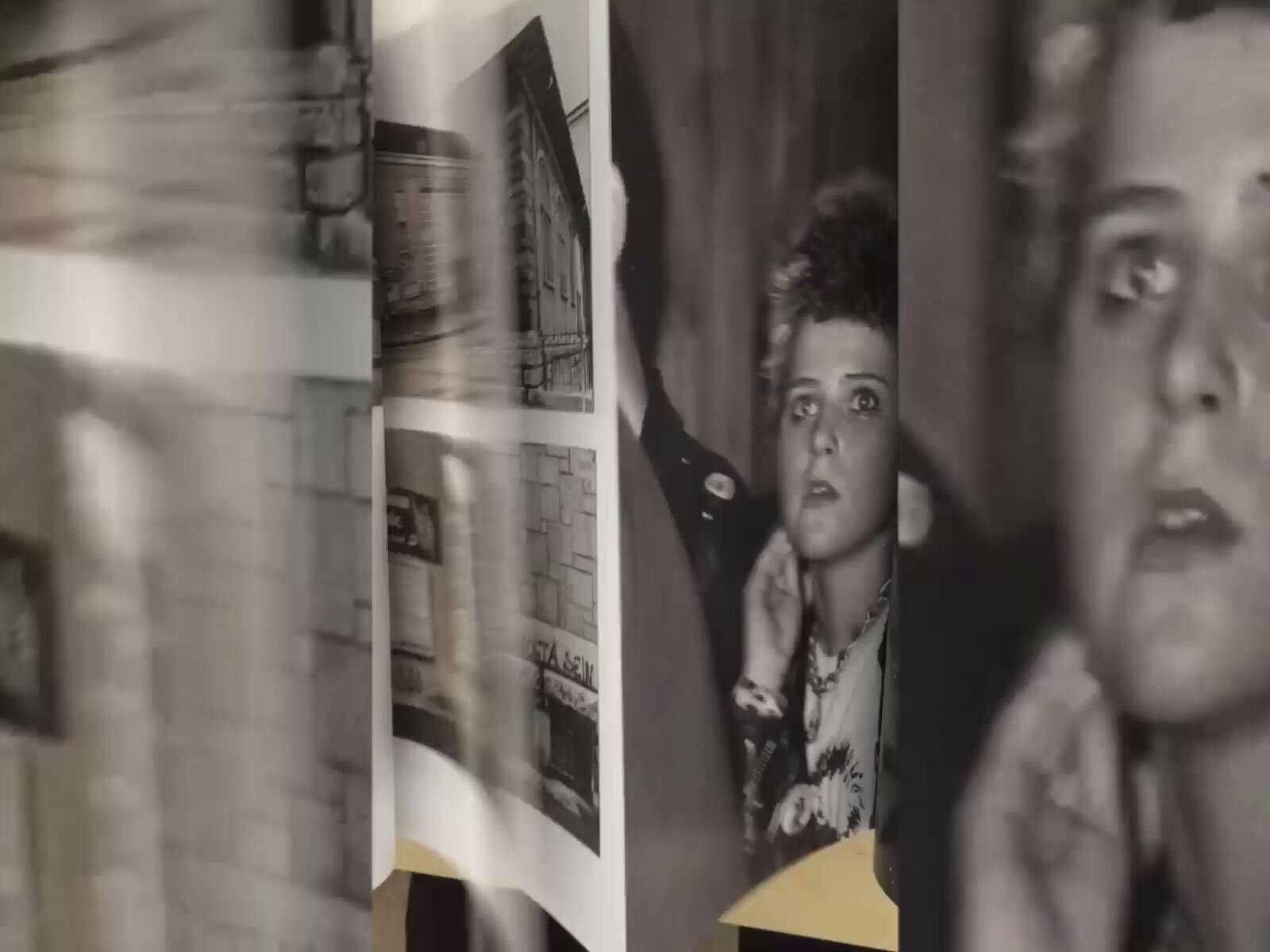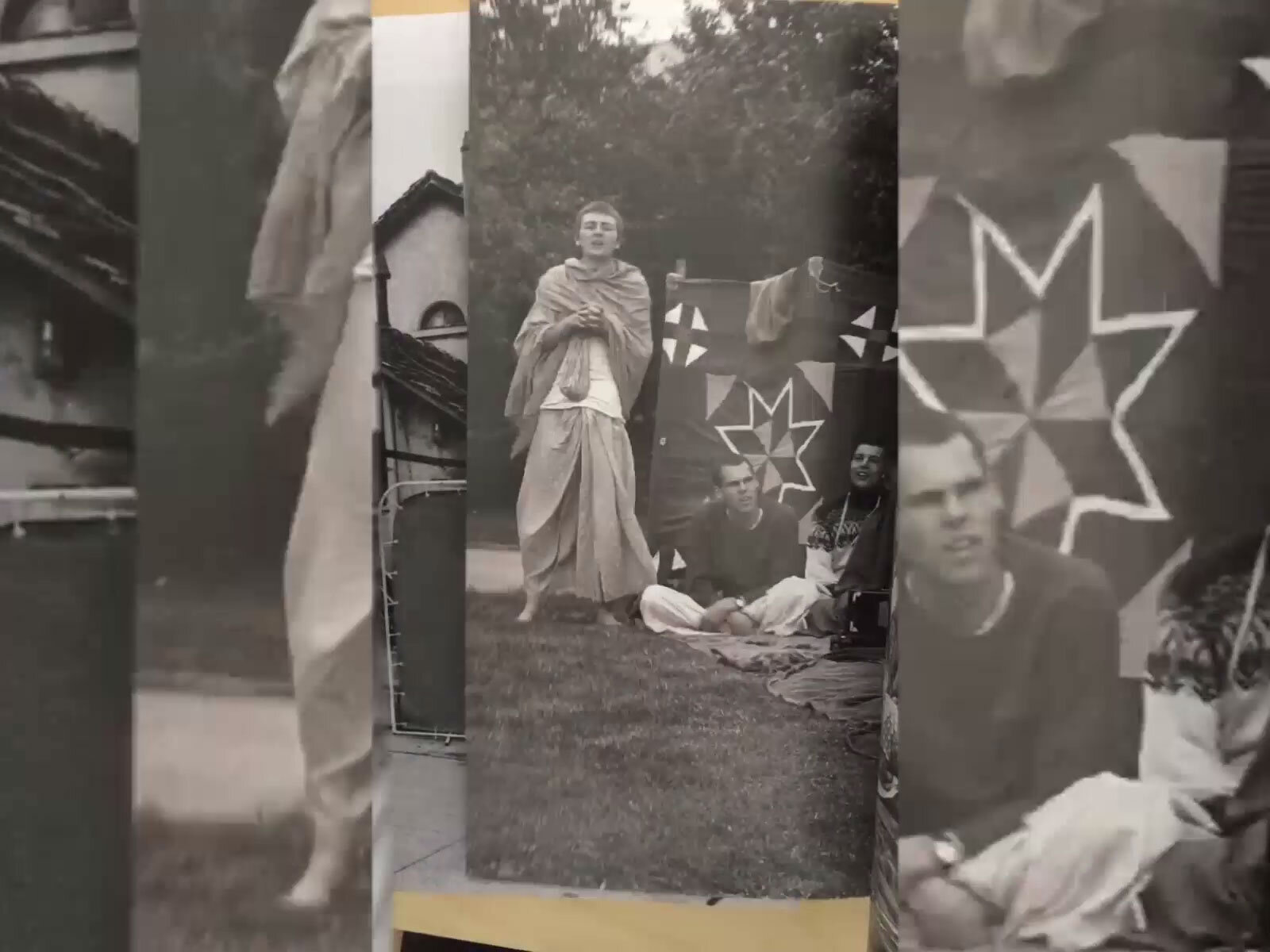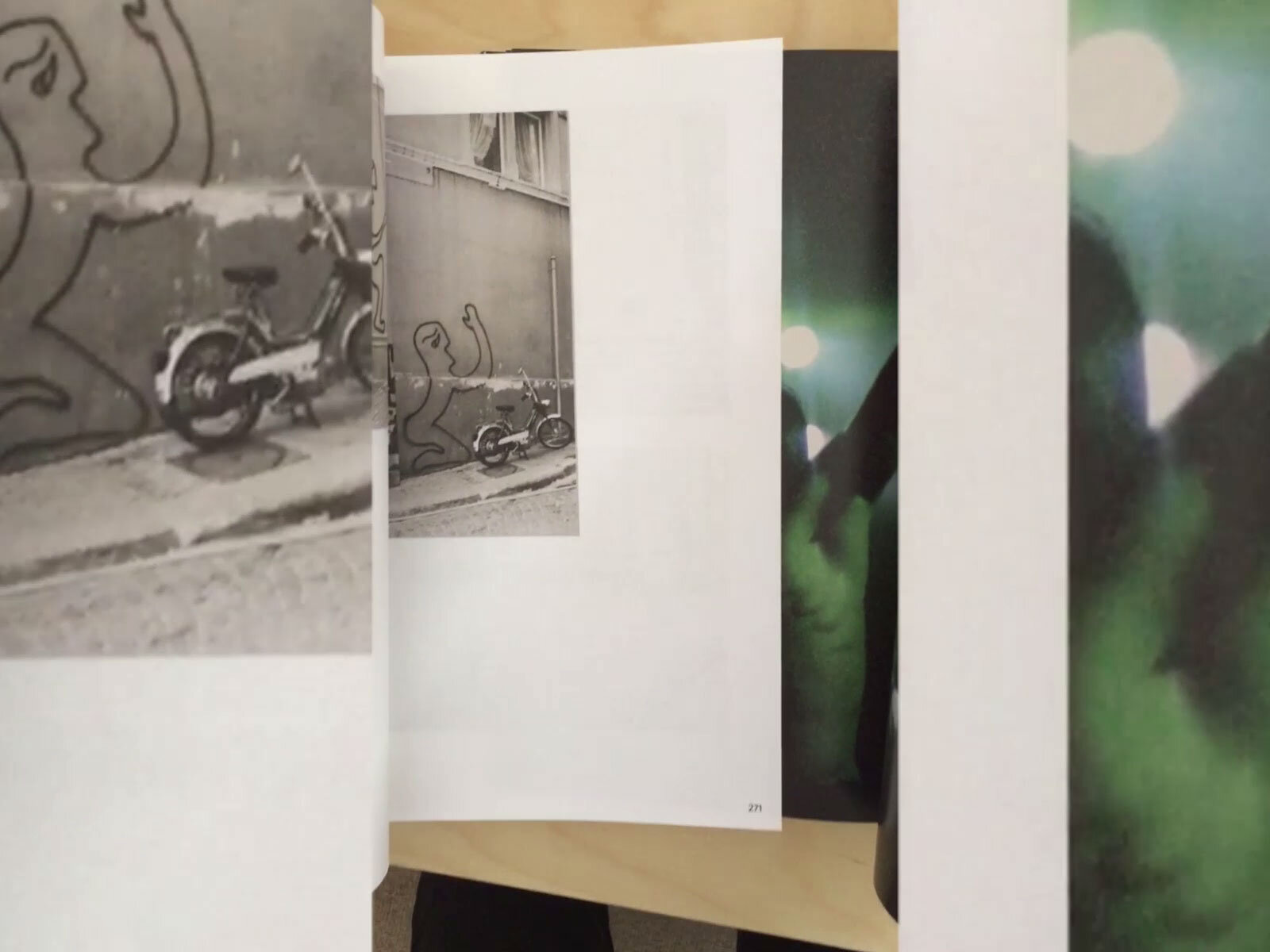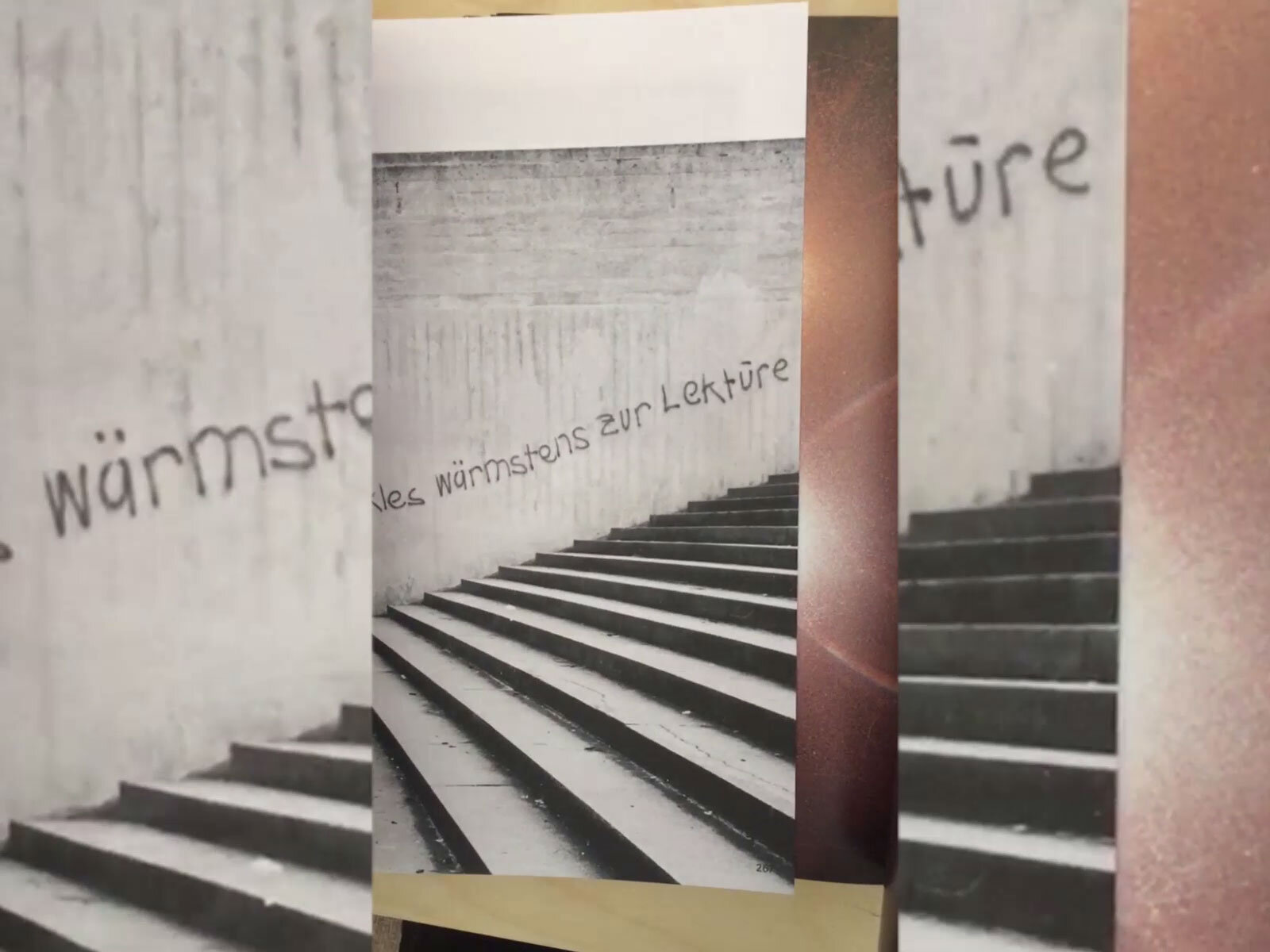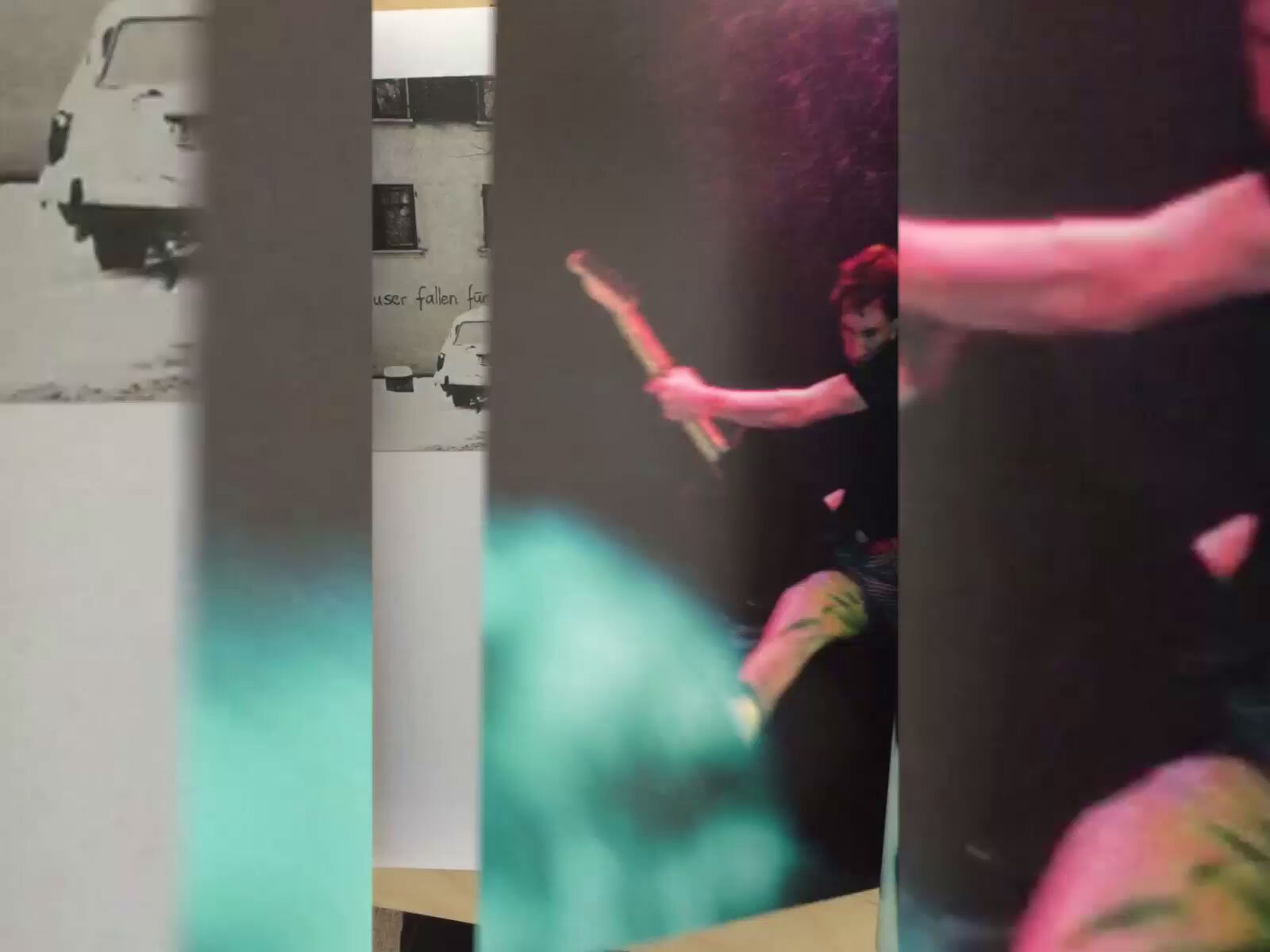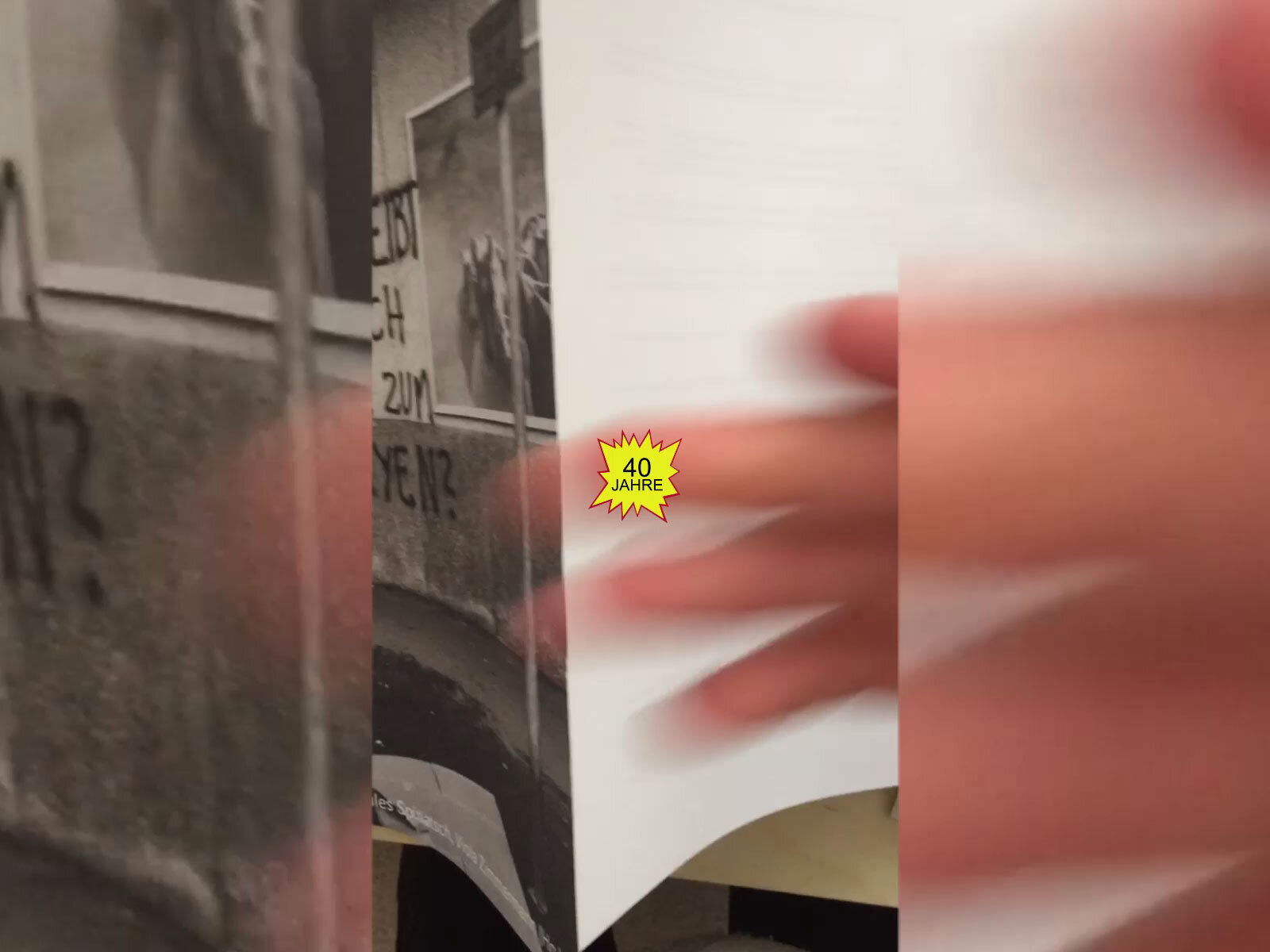40 Years at Kunsthalle Winterthur
The Future was Brighter - A Collective Backfall into the Good Ol’ Times
The curator collective, consisting of Oliver Kielmayer, Joëlle Menzi and Thomas Zacharias, are dealing with following question: should the graffiti The Future Was More Beautiful, documented by Michel Fries probably around 1981 in Horgen, be understood as a cunning chiffre or as a bleak warning? The article “the” and the noun “future”, indicating the time after the present, are in connection with the past tense “was” (an unusual past tense form in Swiss German) as well as next to the “more beautiful” comparative adjective. Does this short sentence therefore stand for a with sharp-witted stupidity calculated oxymoron or is it a paradox, illuminating the common opinion? It looks like a decade was announced with lucid ambiguity, a decade which – in the words of Diedrich Diederichsen in conversation with Kaspar König and Peter Pakesch in 2018 – feels “absolutely strange and alien” nowadays.
The exhibition program at the Kunsthalle Winterthur in the 1980s still seems familiar and very up to date; it orientated itself towards the avant-garde which belonged to the canon of the Documenta in Kassel. Meanwhile a restless youth began to stir ferociously in Zurich – and (with a slight delay) also in Winterthur: Rote Fabrik instead of the city opera, punk instead of Belcanto, F&F instead of HGKZ, self-government instead of heteronomy, video production instead of TV consumption, Bolo instead of apartment blocks, organic farming instead of soil compaction, solar energy instead of nuclear power, women’s power instead of male power, enlightment instead of manipulation, self-publishing instead of mass media, local radio instead of global receiver – anger and affection instead of capitulation and coldness. A gentle astonishment is merely created from today’s perspective when we see with what intensity these demands had to be shaped in order to find acceptance in the social consensus.
A gentle astonishment also arises by the circumstance that the Kunsthalle in Winterthur’s Waaghaus was only marginally affected by these events. After forty years the attempt is made to show this fading decade through a parallel action in the small hall. In practice: While we have four exhibitions shifting in a classical manner in the main hall with Bendicht Fivian, Adrian Schiess, Klaudia Schifferle and Franz Erhard Walther, the side hall is presented as a sofa- and media-contained landscape with handset and a medial wunderkammer (“chamber of curiosities”). The principle of the wunderkammer offers the possibility to react with additional testimonies of that time - anytime and quickly, according to changes of position in the upper hall. The function of the handset is to collect catalogues and documents to the exhibits in the upper hall, and also – in cooperation with the antiquarian of Ulrich Harsch – selected periodicals and literature of the 80s. The media landscape reflects the zeitgeist with alternating videos, movies or analogue recordings. In the cozy sofa landscape with gum tree, yucca palm and filter coffee, experts and witnesses of that period will give talks.
This is the year 2020. Today’s sixty-year olds remember the 80s as their time of change, today’s seventy-year olds discovered their vocation back then, today’s eighty-year olds were consolidating their positions. This is a good moment to look back. The limits of growth were already presented to observant contemporaries in 1972 at the St.Gallen Symposium of the Club of Rome, which was established in 1968. Fifty years on and the message seems to have an impact: Fridays are summoned upon by worried climate campaigners to work hard on the future – and to do it right now. In the light of these current affairs the future wasn’t more beautiful, but it remains temporary possible.
